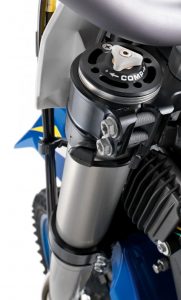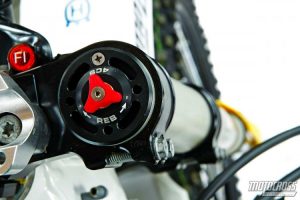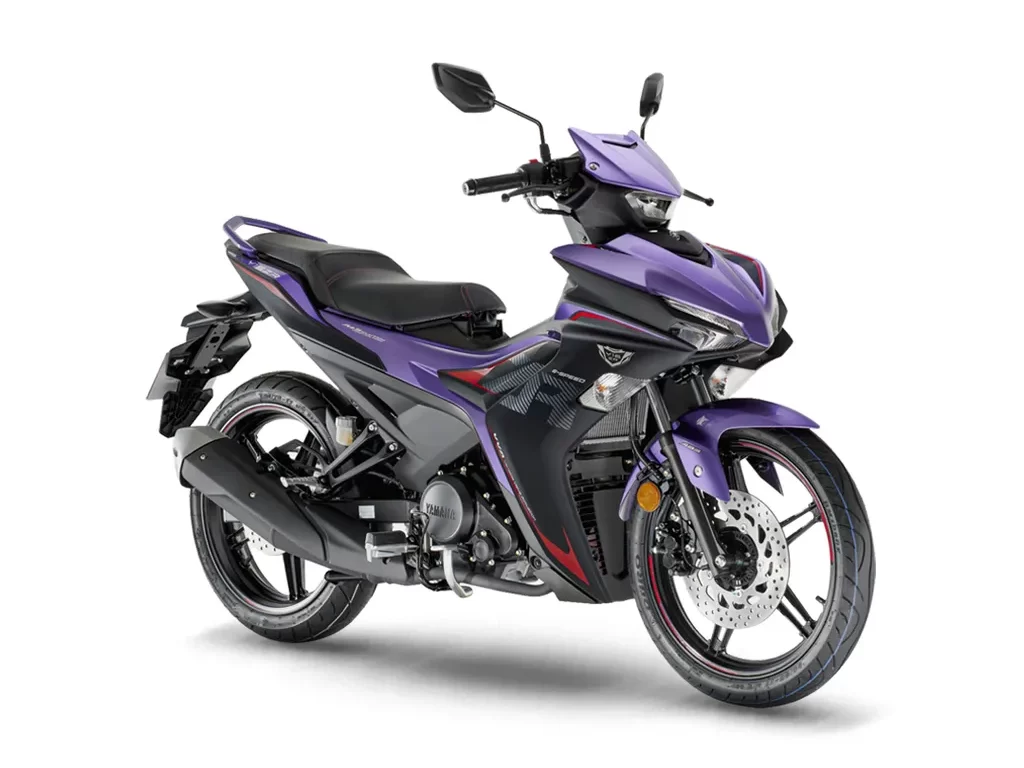-
TechTOC is a weekly technical column moderated by “Foreman” Oh Kah Beng (KB).
-
KB is now the Motorsports Consultant at the TOC Automotive College’s motorcycle racing venture and Principal Trainer at his Most Fun Gym (MFG) MX-school
-
Send in your technical questions, and the winner receives a complimentary session at KB’s Most Fun Gym MX-school!
We began with TechTOC last week, when “Foreman” Oh or as he likes to be called, “KB”, answered a reader’s query about engine operating temperatures (please click on the this link to read about it). This week, KB answers a good question about motorcycle suspension, namely the terminologies.
Question:
I always hear my friends talking about set up. Can you explain what is preload, compression and rebound damping?
— Wong Siew Seng, Selangor
Answer:
To answer your question needs to take up and entire article so I’ll try to be as brief as I can and cover only the basics.
The short answer is, preload is to adjust suspension sag. Sag (there are unladed and laden sag) is the name given to the amount of suspension travel used up when the bike settles under the bike’s own weight (unladen) and when the rider sits on the bike (laden). You alter its settings by rotating the collars or ramp clockwise, which loads the spring. It will cause the spring to push back on the collar, thereby reducing the sag and raising that end of the bike’s ride height at the same time. Move the collars up and the ride height drops.
But do not be fooled! The frustrating misconception is that altering the preload also changes your suspension’s stiffness (spring rate). This is totally wrong! You DO NOT change the spring rate unless you replace the spring. The suspension feels harsh when you add in too much preload as you have reduced the sag too much and the suspension sinks into its stiffer stroke. Think of sag as “freeplay.” However, too little preload is also a bad thing, as the suspension will have to much “freeplay” and compress all the way to its bump stop.
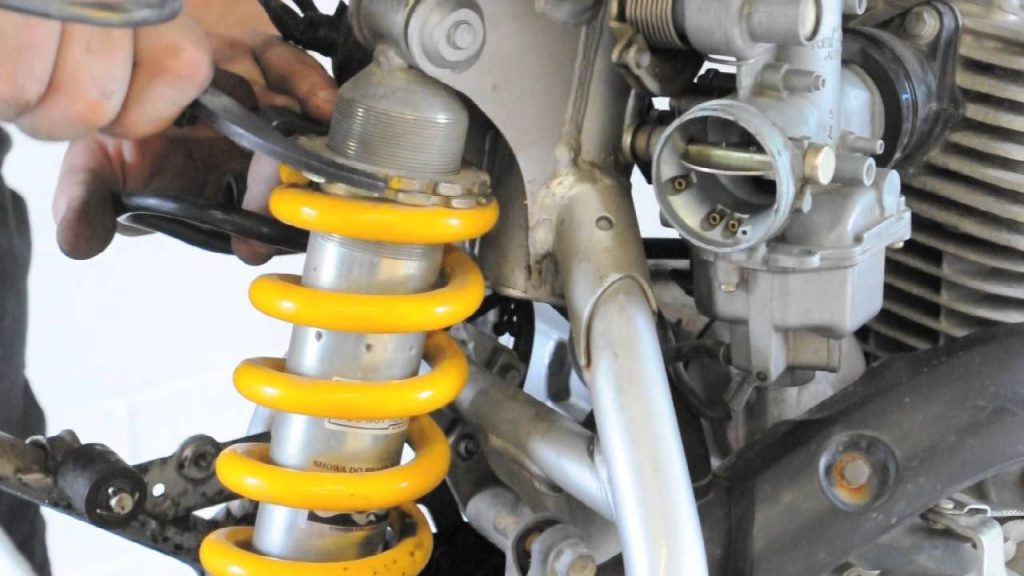
Before we proceed to the subject of damping, let us get this out of the way:
A spring if left to work alone (without damping) is prone “oscillations.” A compressed spring stores energy and when that energy is released, the spring will re-extend past its original length. When that happens, the elongated spring now stores potential energy and will recompress the spring when released. This process happens over and over again, the spring will “oscillate” until the energy turns translates totally to heat. You will feel the bike wallow up and down, like sitting on a motionless boat on a stormy sea – up and down, down and up, up and down.
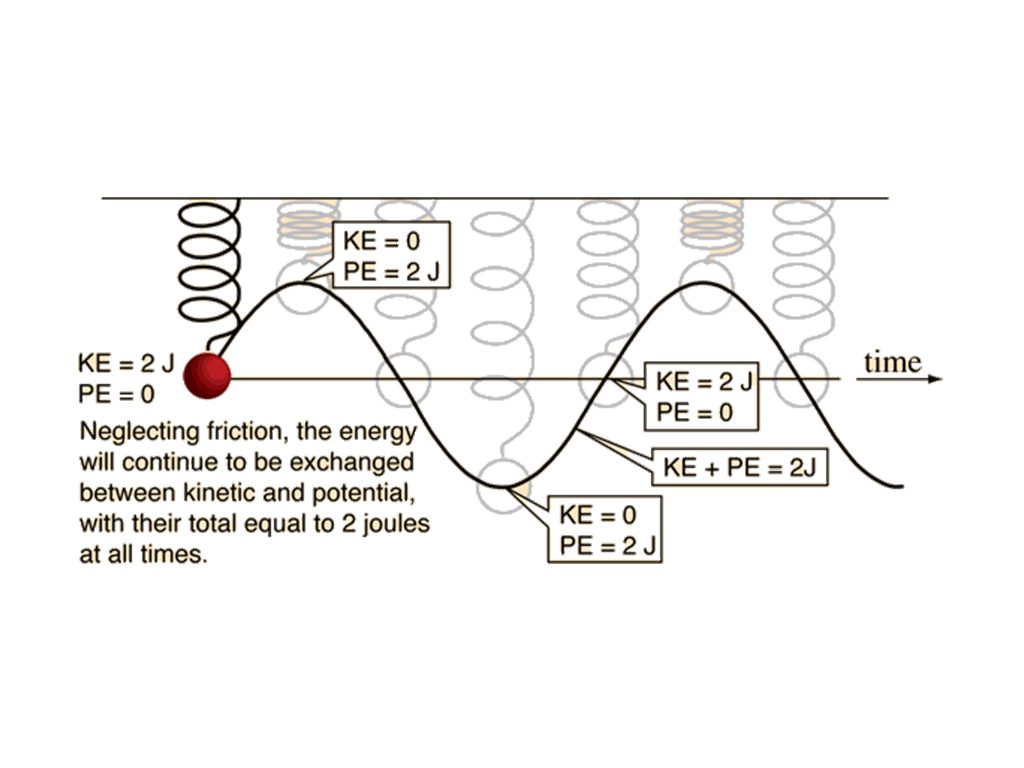
This is where damping comes into play. Damping controls the movements of the spring.
Compression damping (marked as “COM”on the fork/s or shock/s) pertains to how “quickly” or “slowly” the wheel is allowed to push upwards when it contacts a bump. If you increase compression, the valves inside the fork or shock shuts off the flow of hydraulic oil or gas, thereby resisting the wheel’s upward movement. Conversely, if you decrease compression, the valves open up and oil or gas is able to flow more freely, hence the wheel comes up faster.
But DO NOT go to extremes. Just because you ride fast, it does not mean you need more compression damping. If you increase it too much, there will be too much resistance to the wheel’s movement, rendering it difficult to “soak” up bumps i.e. the suspension could not comply with road irregularities. This will cause the wheel to hop and lose traction. Additionally, a lot of bump energy is transferred to the rider. A bit less compression works for cornering at times, allowing the tyre to absorb the bumps and “dig” into the road (better mid-corner stability, too).
Rebound damping is opposite to compression damping. It regulates how quickly or slowly the wheel returns to its normal position after compression. Too much rebound will cause the suspension to “pack up,” as in it returns too slowly and that end of the bike will feel loose as the wheel stays up too long from its optimal position. Too little rebound, conversely, causes the wheel to be pushed back down too quickly (“packing down”) and the bike will feel harsh.
Too little rebound can be confused with too much compression but pay attention to whether the “hit” is felt immediately when you contact a bump or just after it. If it is felt immediately when you hit a bump, it is due to too much compression (or a spring that is too hard). Conversely, if the bump is felt after contacting it, it is due to too little rebound damping.
So, adjust the preload to obtain the correct sag (30 to 40 mm or 1/3 of total suspension travel) and ride height, compression damping for bump absorption and rebound damping for how the wheel returns after bump absorption. Understanding this will do wonders to the handling of your motorcycle.
Although suspension settings are subjective as every rider has a different comfort zone and riding environment, personally, I always like to set both compression and rebound damping on the softer side, and work my way up, using the factory (stock) setting as the baseline. An overly soft setting is more forgiving than overly hard one, as the former is more pliant while the latter is harsh and unforgiving, which could lead to extreme occurrences such as tyre slides and tank slappers.
You can learn more about this in the TOC Automotive College’s Superbike Technician Course. Please visit TOC Automotive College’s Facebook page or their campus (map below) or call call (+603) 7960 8833 for more information. Likewise, you can find more information about the TOC Bina Bakat Program here, or email info@toc.edu.my. Please click on this link for further information on the TOC Superbike Technician Course.
You may also visit Most Fun Gym for off-road training, as it improves your riding skills for all riding conditions. Please call +6012-2072516 for more enquiries or to book an appointment.


